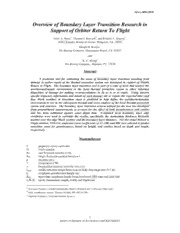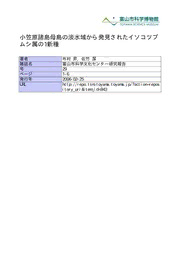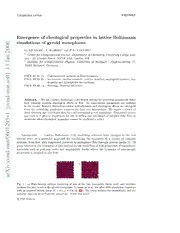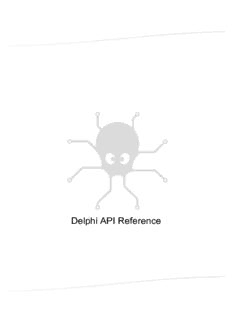
Preview Delphi API Reference
Delphi API Reference Table of contents 1. Introduction .............................................................................................................................. 1 2. Using Yocto-Demo with Delphi ...................................................................................... 3 2.1. Preparation ........................................................................................................................... 3 2.2. Control of the Led function .................................................................................................... 3 2.3. Control of the module part .................................................................................................... 5 2.4. Error handling ....................................................................................................................... 7 Blueprint ..................................................................................................................................... 10 3. Reference ................................................................................................................................ 10 3.1. General functions ................................................................................................................ 11 3.2. Accelerometer function interface ........................................................................................ 31 3.3. Altitude function interface ................................................................................................... 70 3.4. AnButton function interface ............................................................................................... 109 3.5. CarbonDioxide function interface ...................................................................................... 144 3.6. ColorLed function interface ............................................................................................... 180 3.7. Compass function interface .............................................................................................. 206 3.8. Current function interface ................................................................................................. 243 3.9. DataLogger function interface ........................................................................................... 279 3.10. Formatted data sequence ............................................................................................... 310 3.11. Recorded data sequence ................................................................................................ 312 3.12. Unformatted data sequence ........................................................................................... 324 3.13. Digital IO function interface ............................................................................................. 339 3.14. Display function interface ................................................................................................ 380 3.15. DisplayLayer object interface .......................................................................................... 424 3.16. External power supply control interface .......................................................................... 456 3.17. Files function interface .................................................................................................... 478 3.18. GenericSensor function interface ................................................................................... 503 3.19. Gyroscope function interface .......................................................................................... 549 3.20. Yocto-hub port interface ................................................................................................. 597 3.21. Humidity function interface ............................................................................................. 619 3.22. Led function interface ..................................................................................................... 655 3.23. LightSensor function interface ........................................................................................ 679 3.24. Magnetometer function interface .................................................................................... 718 3.25. Measured value .............................................................................................................. 757 3.26. Module control interface ................................................................................................. 763 3.27. Motor function interface .................................................................................................. 808 3.28. Network function interface .............................................................................................. 846 3.29. OS control ....................................................................................................................... 900 3.30. Power function interface ................................................................................................. 920 3.31. Pressure function interface ............................................................................................. 960 3.32. PwmInput function interface ........................................................................................... 996 3.33. Pwm function interface ................................................................................................. 1041 3.34. PwmPowerSource function interface ............................................................................ 1076 3.35. Quaternion interface ..................................................................................................... 1096 3.36. Real Time Clock function interface ............................................................................... 1132 3.37. Reference frame configuration ..................................................................................... 1156 3.38. Relay function interface ................................................................................................ 1189 3.39. Sensor function interface .............................................................................................. 1222 3.40. SerialPort function interface .......................................................................................... 1258 3.41. Servo function interface ................................................................................................ 1312 3.42. Temperature function interface ..................................................................................... 1344 3.43. Tilt function interface ..................................................................................................... 1382 3.44. Voc function interface ................................................................................................... 1418 3.45. Voltage function interface ............................................................................................. 1454 3.46. Voltage source function interface ................................................................................. 1490 3.47. WakeUpMonitor function interface ................................................................................ 1519 3.48. WakeUpSchedule function interface ............................................................................. 1551 3.49. Watchdog function interface ......................................................................................... 1585 3.50. Wireless function interface ............................................................................................ 1627 Index .......................................................................................................................................... 1655 1. Introduction This manual is intended to be used as a reference for Yoctopuce Delphi library, in order to interface your code with USB sensors and controllers. The next chapter is taken from the free USB device Yocto-Demo, in order to provide a concrete examples of how the library is used within a program. The remaining part of the manual is a function-by-function, class-by-class documentation of the API. The first section describes all general-purpose global function, while the forthcoming sections describe the various classes that you may have to use depending on the Yoctopuce device beeing used. For more informations regarding the purpose and the usage of a given device attribute, please refer to the extended discussion provided in the device-specific user manual. www.yoctopuce.com 1 2 www.yoctopuce.com 2. Using Yocto-Demo with Delphi Delphi is a descendent of Turbo-Pascal. Originally, Delphi was produced by Borland, Embarcadero now edits it. The strength of this language resides in its ease of use, as anyone with some notions of the Pascal language can develop a Windows application in next to no time. Its only disadvantage is to cost something1. Delphi libraries are provided not as VCL components, but directly as source files. These files are compatible with most Delphi versions.2 To keep them simple, all the examples provided in this documentation are console applications. Obviously, the libraries work in a strictly identical way with VCL applications. You will soon notice that the Delphi API defines many functions which return objects. You do not need to deallocate these objects yourself, the API does it automatically at the end of the application. 2.1. Preparation Go to the Yoctopuce web site and download the Yoctopuce Delphi libraries3. Uncompress everything in a directory of your choice, add the subdirectory sources in the list of directories of Delphi libraries.4 By default, the Yoctopuce Delphi library uses the yapi.dll DLL, all the applications you will create with Delphi must have access to this DLL. The simplest way to ensure this is to make sure yapi.dll is located in the same directory as the executable file of your application. 2.2. Control of the Led function Launch your Delphi environment, copy the yapi.dll DLL in a directory, create a new console application in the same directory, and copy-paste the piece of code below: program helloworld; {$APPTYPE CONSOLE} uses SysUtils, yocto_api, yocto_led; 1 Actually, Borland provided free versions (for personal use) of Delphi 2006 and 2007. Look for them on the Internet, you may still be able to download them. 2 Delphi libraries are regularly tested with Delphi 5 and Delphi XE2. 3 www.yoctopuce.com/EN/libraries.php 4 Use the Tools / Environment options menu. www.yoctopuce.com 3 2. Using Yocto-Demo with Delphi Procedure Usage(); var exe : string; begin exe:= ExtractFileName(paramstr(0)); WriteLn(exe+' <serial_number>'); WriteLn(exe+' <logical_name>'); WriteLn(exe+' any'); halt; End; procedure setLedState(led:TYLed; state:boolean); begin if (led.isOnline()) then begin if state then led.set_power(Y_POWER_ON) else led.set_power(Y_POWER_OFF); end else Writeln('Module not connected (check identification and USB cable)'); end; var c : char; led : TYLed; errmsg : string; begin // Setup the API to use local USB devices if yRegisterHub('usb', errmsg)<>YAPI_SUCCESS then begin Write('RegisterHub error: '+errmsg); exit; end; if paramstr(1)='any' then begin // use the first available led led := yFirstLed(); if led=nil then begin writeln('No module connected (check USB cable)'); halt; end end else // or use the one specified on the command line led:= YFindLed(paramstr(1)+'.led'); // make sure it is connected if not(led.isOnline()) then begin Writeln('Module not connected (check identification and USB cable)'); halt; end; // minimalist UI Writeln('0: turn test led OFF'); Writeln('1: turn test led ON'); Writeln('x: exit'); repeat read(c); case c of '0' : setLedState(led,false); '1' : setLedState(led,true); end; until c='x'; end. There are only a few really important lines in this sample example. We will look at them in details. yocto_api and yocto_led These two units provide access to the functions allowing you to manage Yoctopuce modules. yocto_api must always be used, yocto_led is necessary to manage modules containing a led, such as Yocto-Demo. 4 www.yoctopuce.com 2. Using Yocto-Demo with Delphi yRegisterHub The yRegisterHub function initializes the Yoctopuce API and specifies where the modules should be looked for. When used with the parameter 'usb', it will use the modules locally connected to the computer running the library. If the initialization does not succeed, this function returns a value different from YAPI_SUCCESS and errmsg contains the error message. yFindLed The yFindLed function allows you to find a led from the serial number of the module on which it resides and from its function name. You can also use logical names, as long as you have initialized them. Let us imagine a Yocto-Demo module with serial number YCTOPOC1-123456 which you have named "MyModule", and for which you have given the led function the name "MyFunction". The following five calls are strictly equivalent, as long as "MyFunction" is defined only once. led := yFindLed("YCTOPOC1-123456.led"); led := yFindLed("YCTOPOC1-123456.MyFunction"); led := yFindLed("MyModule.led"); led := yFindLed("MyModule.MyFunction"); led := yFindLed("MyFunction"); yFindLed returns an object which you can then use at will to control the led. isOnline The isOnline() method of the object returned by yFindLed allows you to know if the corresponding module is present and in working order. set_power The set_power() function of the objet returned by yFindLed allows you to turn on and off the led. The argument is Y_POWER_ON or Y_POWER_OFF. In the reference on the programming interface, you will find more methods to precisely control the luminosity and make the led blink automatically. 2.3. Control of the module part Each module can be controlled in a similar manner, you can find below a simple sample program displaying the main parameters of the module and enabling you to activate the localization beacon. program modulecontrol; {$APPTYPE CONSOLE} uses SysUtils, yocto_api; const serial = 'YCTOPOC1-123456'; // use serial number or logical name procedure refresh(module:Tymodule) ; begin if (module.isOnline()) then begin Writeln(''); Writeln('Serial : ' + module.get_serialNumber()); Writeln('Logical name : ' + module.get_logicalName()); Writeln('Luminosity : ' + intToStr(module.get_luminosity())); Write('Beacon :'); if (module.get_beacon()=Y_BEACON_ON) then Writeln('on') else Writeln('off'); Writeln('uptime : ' + intToStr(module.get_upTime() div 1000)+'s'); Writeln('USB current : ' + intToStr(module.get_usbCurrent())+'mA'); Writeln('Logs : '); Writeln(module.get_lastlogs()); Writeln(''); Writeln('r : refresh / b:beacon ON / space : beacon off'); end else Writeln('Module not connected (check identification and USB cable)'); end; www.yoctopuce.com 5 2. Using Yocto-Demo with Delphi procedure beacon(module:Tymodule;state:integer); begin module.set_beacon(state); refresh(module); end; var module : TYModule; c : char; errmsg : string; begin // Setup the API to use local USB devices if yRegisterHub('usb', errmsg)<>YAPI_SUCCESS then begin Write('RegisterHub error: '+errmsg); exit; end; module := yFindModule(serial); refresh(module); repeat read(c); case c of 'r': refresh(module); 'b': beacon(module,Y_BEACON_ON); ' ': beacon(module,Y_BEACON_OFF); end; until c = 'x'; end. Each property xxx of the module can be read thanks to a method of type get_xxxx(), and properties which are not read-only can be modified with the help of the set_xxx() method. For more details regarding the used functions, refer to the API chapters. Changing the module settings When you want to modify the settings of a module, you only need to call the corresponding set_xxx() function. However, this modification is performed only in the random access memory (RAM) of the module: if the module is restarted, the modifications are lost. To memorize them persistently, it is necessary to ask the module to save its current configuration in its permanent memory. To do so, use the saveToFlash() method. Inversely, it is possible to force the module to forget its current settings by using the revertFromFlash() method. The short example below allows you to modify the logical name of a module. program savesettings; {$APPTYPE CONSOLE} uses SysUtils, yocto_api; const serial = 'YCTOPOC1-123456'; // use serial number or logical name var module : TYModule; errmsg : string; newname : string; begin // Setup the API to use local USB devices if yRegisterHub('usb', errmsg)<>YAPI_SUCCESS then begin Write('RegisterHub error: '+errmsg); exit; end; module := yFindModule(serial); if (not(module.isOnline)) then begin writeln('Module not connected (check identification and USB cable)'); exit; 6 www.yoctopuce.com
Description:The list of books you might like

Believe Me

The Sweetest Oblivion (Made Book 1)

Mind Management, Not Time Management

The 48 Laws of Power

IS/ISO 105-A03: Textiles- Tests for colour fastness Part A02- Grey scales for assessing staining (Superseding IS 769
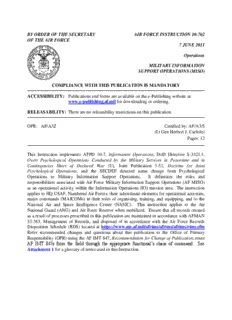
by order of the secretary air force instruction 10-702 of the

Budget-At-A-Glance, 2006-07
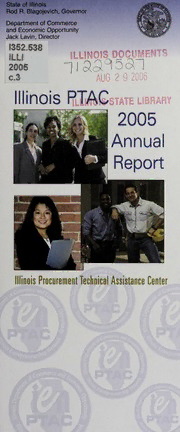
Illinois PTAC ... annual report

The Retirement Years
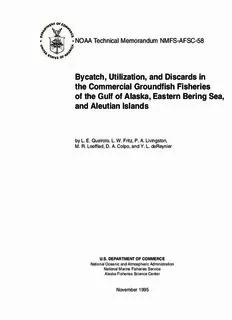
Bycatch, utilization, and discards in the commercial groundfish
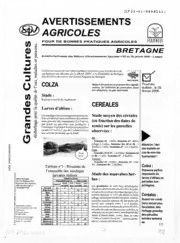
Avertissements Agricoles - Grandes cultures - Bretagne - 2006 - 2

2084
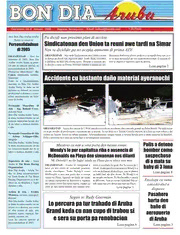
Bon Dia Aruba (4 Januari 2006)
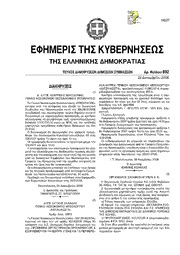
Greek Government Gazette: Part 7, 2006 no. 892

13. ulusal psikolojik danışma ve rehberlik kongresi bildiri özetleri kitabı

C anton © bser U cr
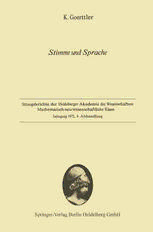
Stimme und Sprache

C anton €>b£crUer
![Quantenmechanik [Quantum Mech - IN GERMAN] book image](https://cdn.pdfdrive.to/media/content/thumbnails/c339d3e1-fb21-49fc-9adc-8c827d6bafd0.webp)
Quantenmechanik [Quantum Mech - IN GERMAN]
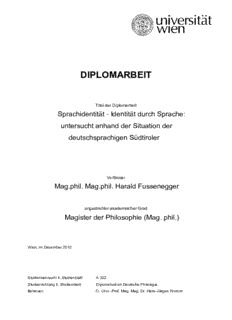
Südtirol/Alto Adige/Südtirol
